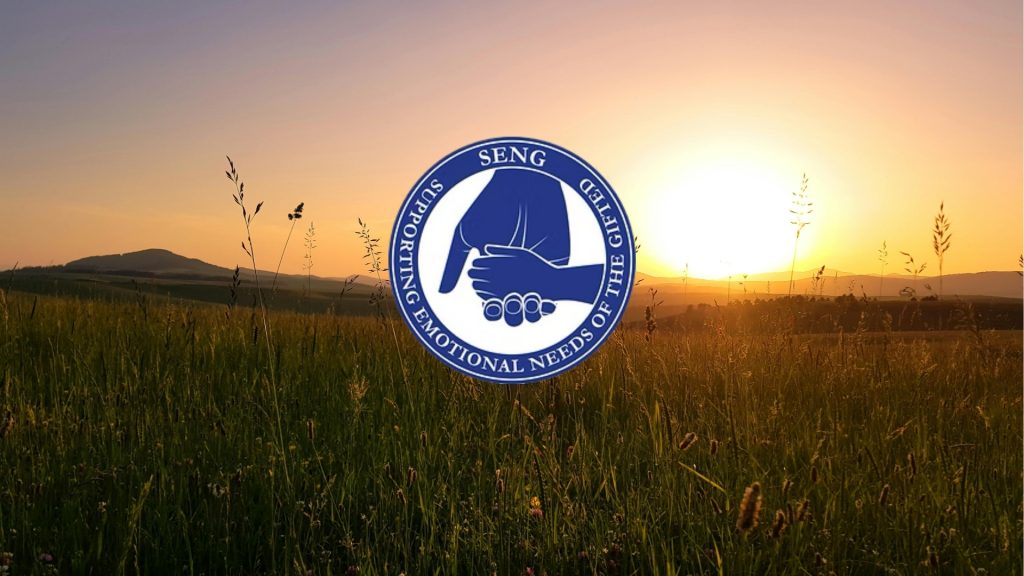From the back seat of the van I hear the most amazing music. That’s where my daughter shares it with me. I rarely see her otherwise, tucked up in her room, under her covers. It’s been a hard winter. And a long yet short 15 years of figuring and not figuring things out.
Usually I hear Japanese pop music, with her singing along (she does not speak Japanese … yet), or vocaloids (computer-manipulated sound), or a band of singing robots. I’ve fallen in love with Imagine Dragons, and when she plays On Top of the World, I pump my fist in the air once or twice, careful to keep both hands on the wheel, per her reminder. Yesterday, on the way back from occupational therapy, the place where her diagnosis began, she played me this song called Boats and Birds:
If you’ll be my star
I’ll be your sky
You can hide underneath me and come out at night
When I turn jet black
And you show off your light
I live to let you shine
When I say “began,” that’s not quite accurate. Her official Aspie diagnosis was a long and winding road. In 1996, two years before her birth even, I attended my first SENG conference. My eyes were OPENED! When Sidney was born, her eyes were open, too. I remember her persistent and inquisitive glances around the birthing room, probably asking herself, in Sidney-ese: “Where the heckle am I?” As a baby she was a late walker, preferring to look at books. When she finally did walk at 14 months, she’d walk around asking people to read to her. At 18 months she told an unfortunate clerk who’d called her a “lady”: “I’m not a lady, I’m a duck!” She told off another misguided clerk who tried to get her to look for penguins in our back yard: “But penguins live in Antarctica!” Her first word that she read out loud was “brachiosaurus.” She read the word “mysterious” on a sign at our favorite natural history museum. This was when she was 2.
She was an intense child to say the least. Potty training took a long time. One babysitter quit. She was worried we might call Children Services on her because Sidney could talk so much. Nonetheless, Sidney was intense. She knew what she wanted. She knew what she liked: books, the color yellow, dragons, dinosaurs, flying reptiles, fish. If she didn’t get the right sticker, the right colored bell in the bell choir, meltdown. Once we sat along the shore of Lake Erie, when she was 4, discussing the fact that the shoreline had changed over the millennium. She burst into tears. For the first time she understood our mortality. I chalked it all up to gifted OEs, having learned about Dabrowski and Michael Piechowski at the conference. But still, I was dumbfounded about how best to meet her needs.
At 4 we had her tested for early entrance kindergarten. She attended preschool for half the day and kindergarten for the other half. This was against the better judgment of the school counselor, who had done a “nongifted” screening and found her pencil grip wrong, as well as the preschool director who thought she’d benefit from waiting due to being young and argumentative. By the time we got a retest from the county, she started kindergarten in October. She fell asleep on the bus everyday, had trouble with social interactions, and argued frequently. She had the most trouble in gym. Her progress reports consistently told us how behind she was kinesthetically. In first grade, she asked me to help her find the definition in the dictionary. After reading it, she could SKIP! She was a voracious reader of Boxcar Children books and even started to write her own version of a chapter book.
In second grade she had to have a violin TOMORROW. She learned fast but was inappropriate at recitals. The teacher hinted there might be something beyond OEs based on her experience with a twice-exceptional son. This prompted me to contact Linda Silverman’s office. I filled out loads of papers, had a phone consultation, and came out of the discussion with SPD: Sensory Processing Disorder. Next stop, OT. When we moved, Sidney was entering fourth grade.
We were directed to an occupational therapy center to work on her sensory issues. One visit, she actually growled at a therapist after she walked by and said hello. I was at my wit’s end. I asked our therapist in desperation: “Please tell me what you think!” She was the first person to use the term: Asperger’s. I made the phone call, got an appointment, followed through with screening, testing, more testing, and received our second definitive diagnosis. It felt so good to have a handle to hold. The next step was an IEP.
I started teaching at a small, private school and took Sidney with me. A bad idea: kids thought I favored her. Schools that don’t support flexibility are not the place for anyone with outlying differences. What she needed was services and structure and compassionate adults. After leaving the private school we tried a gifted public charter with little support for an IEP. It is so hard for twice-exceptional students to receive what they need for both exceptionalities.
Middle school was when Pokemon took over our lives. Traditional high school lasted about two months; she couldn’t take the sensory overload of 2,000 kids. Her favorite class was theater, and she cried the day we left saying she’d miss Mr. K. Until this February she attended an alternative high school where staff wrapped her in love and flexibility. Recently she broke down on the bus, overwhelmed by senses, noise, smells, and people, and became largely homebound. I’m her rock; I take her to OT and appointments. She wants to go to Wales to visit an internet friend, but that’s the only trip she can imagine.
I’m working on getting her a homebound tutor, Medicaid, and county mental health services. Did I mention she has OCD? This alphabet soup of diagnoses has baffled, surprised, overwhelmed, and liberated me. I needed these terms for an IEP, for educators to take notice, for differentiated instruction and programs. Sometimes children need an “owner’s manual.” Instead of “fixing” we should think of “accepting,” and as Mrs. Pickard, Sidney’s principal, calls it: “stretching.”
So here is the rest of the song Sidney was playing yesterday. A gift:
“Boats And Birds”
by Gregory and the Hawks
If you’ll be my star
I’ll be your sky
You can hide underneath me and come out at night
When I turn jet black
And you show off your light
I live to let you shine
I live to let you shine
But you can skyrocket away from me
And never come back if you find another galaxy
Far from here with more room to fly
Just leave me your stardust to remember you by
If you’ll be my boat
I’ll be your sea
A depth of pure blue just to probe curiosity
Ebbing and flowing
And pushed by a breeze
I live to make you free
I live to make you free
But you can set sail to the west if you want to
And pass the horizon, ’til I can’t even see you
Far from here
Where the beaches are wide
Just leave me your wake to remember you by
If you’ll be my star
I’ll be your sky
You can hide underneath me and come out at night
When I turn jet black
And you show off your light
I live to let you shine
I live to let you shine
But you can skyrocket away from me
And never come back if you find another galaxy
Far from here with more room to fly
Just leave me your stardust to remember you by
Stardust to remember you by

